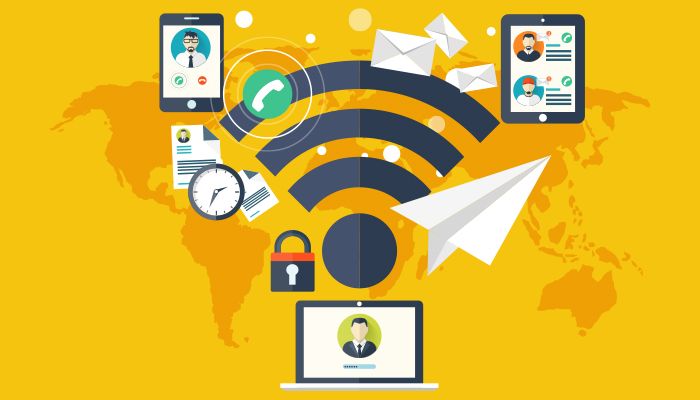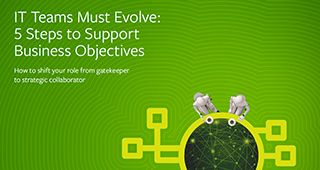In the 21st century, IT has pivoted significantly. Where it used to be one part of a successful business, IT is often both the backbone and the product of a successful business. With this significant shift, companies began to realize that not all functions of IT can be managed the same way, yet they remained unsure how to handle this divide.
In the last few years, a management practice called Bimodal IT emerged, defining two types of IT, and prescribing separate management and functions for each.
In 2018, Bimodal IT has been successfully adopted by some enterprises, but it may not be for everyone. In this article, we’re taking a look at the concept of Bimodal IT, its goals, and its benefits so you can consider whether it’s the right fit for your team.
Defining Bimodal IT
Gartner, a leading IT research and advisory firm, formally introduced the concept of Bimodal IT in 2014. They define it as “the practice of managing two separate styles of work – one focused on predictability and the other on exploration.”
The theory separates IT work styles into two modes:
- Mode 1 is focused and optimized on areas of IT that are generally predictable and understood, and may require a high level of security and safety. This mode may include the traditional internal, back-office workings of IT such as securing systems and servers and storing sensitive data.
- Mode 2, in contrast, is focused and optimized on IT areas that are uncertain, experimental, or exploratory. This mode often comprises the development of external consumer technology, and often correlated with agile and DevOps cultures.
Gartner’s purpose in defining and separating these two modes is to recognize different management approaches, tools, and processes, without favoring one over the other. Indeed, both are essential to a successful IT enterprise, because together they secure substantial value while still driving innovation and, perhaps, organizational change.
The challenge of IT in the 21st century
For many companies prior to the 2000s, IT was a beneficial back-office system – running systems and servers, organizing data, making repeatable tasks easier to perform, saving time and ensuring accuracy.
With the rise of internet and big data, however, IT increasingly became crucial to the front office systems of rapid feature development – IT is now the solution, the product. Consumers began expecting solutions quickly, and, thanks to widespread access via the internet, if consumers don’t have solutions, they are able to find or develop their own solutions (fairly) easily and affordably. This concept – of consumers finding their own solutions – is sometimes known as “shadow IT”.
Using tools and processes that ensured security and stability, management struggled to keep up with the demands of rapid delivery and innovation. Developers spent plenty of time testing repeatedly before releasing an update.
Gartner’s research bore out this shift, particularly the hurdles management faced in deciding how to provide resources, structure, and deliverables in such ways that both security and innovative, speedy time-to-market require. Bimodal IT became one prescriptive model for organizing enterprise IT around these changes.
Benefits of Bimodal IT
Industry experts agree that this shift exists. It began several years ago, and it is amplified today.
Detangling the two areas of IT does make sense in a lot of ways. Legacy systems often are responsible for the most critical business needs, like internal networks, and securing sensitive data as needed for accounting, HR, finance, etc. These areas rely on the safe environments of legacy systems. Trying something simply to be “new” or “innovative” – that may fail – is a risk that these business needs often can’t take.
Bimodal IT, then, is an attempt to manage IT in a way that promotes rapid change while maintaining safety and security. These contrasting environments require different tools, processes, and skills.
For many companies, the benefits of Bimodal IT make sense. And there are plenty of benefits to delineating two IT modes:
- Speed. By defining and managing one IT area to focus wholly on delivering new solutions, they can produce rapidly, to meet business needs.
- Innovation. Because Mode 2 isn’t focused on maintaining security and handling daily issues, they can stay focused on wider problems that require innovation to solve.
- Agility. The goal for many enterprises is to disrupt a certain industry – and by defining which parts of IT focus on these disruptions, they can get there faster. Those in Mode 2 IT become adept at agile practices, so there’s less risk and overhead, and the effort is smoother, as time goes on.
- Reduces “Shadow IT”. When users get the solutions they need quickly, they are much less likely to use unauthorized or unproved applications and software – they aren’t bypassing IT.
Drawbacks to Bimodal IT
As with any suggestion, Bimodal IT is not a one-size-fits-all solution. Industry experts and enterprises who have tried the approach point to a few drawbacks of Bimodal IT:
- The separation can be discursive. By explicitly separating these groups, teams may battle for attention, resources, power, and influence. This can create a mentality of “us vs. them” within the larger IT sphere.
- The separation can be too neat. Defining two IT modes in this way can seem that the modes won’t, or shouldn’t, rely on each other. For many enterprises, the reality is that an innovative, well-functioning application or software solution, the goal of Mode 2, often relies on well-oiled legacy systems that are inherent in Mode 1.
- The separation can be confusing. Confusing teams simply for the sake of “innovation” often leads to confusion on roles and processes. This confusion can manifest as resistance to change, common when employees are told about changes that don’t make sense to them.
- The separation doesn’t guarantee innovation. Simply defining one team as innovative doesn’t mean it will just happen – if it did, everyone would be innovators. In fact, some enterprises find that innovation comes from the blending of skills and tools, not from intentionally drawn lines.
Beyond specific issues that may arise in a Bimodal IT environment, some industry experts are concerned that formally ushering in Mode 2 effectively closes the door on Mode 1. If CIOs and CEOs continue spinning off agile teams to produce solutions, what happens to the secure environment of Mode 1, which is often still relied upon by Mode 2? In order to be successful, an IT company must continually deliver solutions that justify its success
Bimodal IT: A new name for existing concepts?
To experienced developers and engineers, Bimodal IT can sound like other theories that divide and define two types of IT, including waterfall vs. agile development, traditional vs. DevOps, legacy vs. emergency, sustaining vs. disruptive, etc. However you define these differences, many technology experts believe that Bimodal IT is only part of the answer: defining two areas of IT is helpful, perhaps necessary, but it also isn’t enough.
Bimodal IT is one option towards remedying this crucial tension in IT, and it may be successful for your enterprise.
Still, this tension will continue to grow and shift as enterprise IT adapts, more and more, to agile business needs – which means the requirements for resources, management, and governance will continue to change as well, regardless of whether they’re siloed, as in Bimodal IT, or not.






